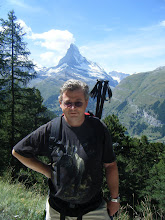Being an aspiring writer of young adult fiction, I naturally read the Hunger Games trilogy. I don't think I need to explain what this is, unless you're reading this blog having just landed from Mars (in which case there are better things you could be doing). Since it was so successful - and highly acclaimed - I naturally wanted to see what the fuss was about.
I have to say I wasn't as nuts about it as its fan base clearly is. In fact, I considered quitting after the end of the first book. However, I decided to persevere and I think the books do improve.
My biggest quibble is with the use of present tense. There are some circumstances where this can work (e.g. Miss Smilla's feeling for Snow, where it adds to the sense of mystery and bewilderment). However, it is being used increasingly as a lazy gimmick - as Philip Pullman said, like hand-held camera. I don't think it adds anything to this trilogy; quite the opposite. Some of the pacing was off, with some episodes being rushed and others being dragged out. And, especially in the first book, I found the lead character (Katniss Everdeen) difficult to like; her agonising over her torn feelings for her game partner (Peeta) and her friend since childhood (Gale) were especially irritating.
On the other hand, the movie turned out to be spectacular. Yes, you could argue that it's a blockbuster that somewhat lacks soul but it's production values are excellent. Of course, even reading the book, I could imagine how making the movie would be a designer's dream (the costumes, the depictions of the poverty-stricken District 12 and the contrasting opulence of the Capitol, the games arena). However, while there was plenty of scope for getting it wrong, the movie looks fantastic!
The movie took the story out of the jerky present tense and, indeed, out of the first person narrative, with some excellent cameo scenes where Katniss doesn't appear at all. I particularly liked the control room of the arena, where technicians coldly created lethal hazards for the children in the arena to face.
The casting, too, is spot-on and the actors deliver their roles superbly. Those worth a mention include Woody Harrelson as the disillusioned and drunken mentor, and the lovely Amandla Stenberg as the impish and feisty (but doomed) Rue. Sadly, the casting of an African American in the latter role has provoked a lot of racist comments on Twitter and elsewhere.
Nevertheless, the cast member who runs away with the movie is, of course, Jennifer Lawrence as Katniss. I first saw her in Winter's Bone, for which she earned a well-merited Oscar nomination. The gritty, courageous character she plays in that movie is very similar to Katniss (raised in poverty, father absent, mother ill, siblings to look after, facing violence etc.). Therefore, while I regret other talented actresses (like Saoirse Ronan and Hailee Steinfeld) being passed over, I can see why Lawrence was chosen. She rises to the occasion admirably.



.jpg)





